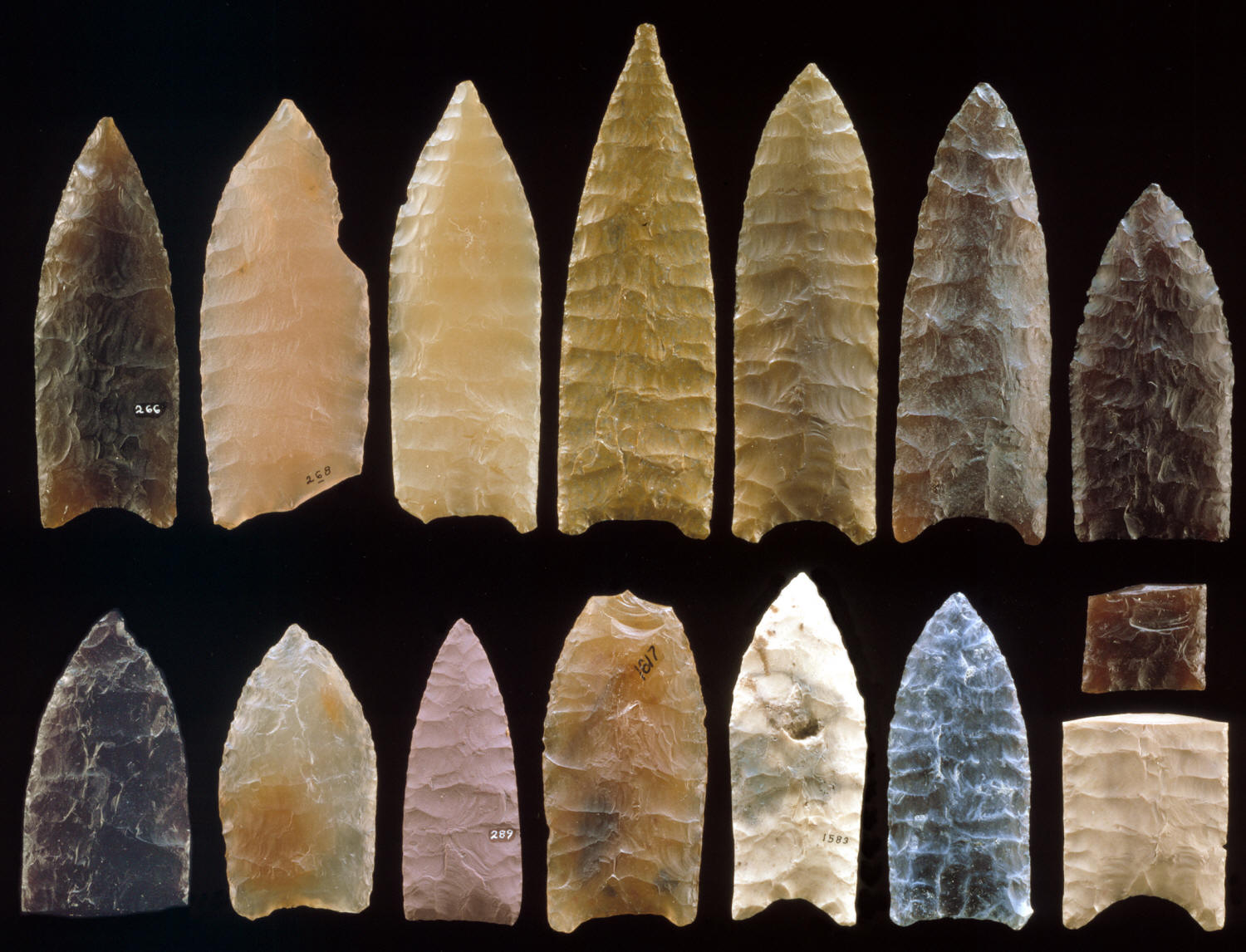|
GOSHEN POINTS
Thirty one complete and broken pieces of Goshen points were found
during the excavation of the Mill Iron site. The picture above shows
several
casts that were molded from 15 of the better examples.
Eleven points were found in the camp area, twelve in the bone bed
meat processing area and seven points were found on the surface. The
projectile point assemblage from Mill Iron have a wide range of style and flaking technique. Three of the bases
in this picture are almost straight (the base is missing from the
point at lower left). Most of
these points have bases that vary from slightly to fairly deeply
concave. Three of them have concave bases but are straight at the base of the concavity,
similar to some Folsom points. The sides are straight to slightly
convex and one example appears to be slightly fish-tailed because
the ears are projected slightly outward. Some of the points in the
assemblage have no ears, but most have either squared, rounded or pointed
ears. Basal thinning is observed on some points. The rest only have
minor pressure flaking, not large enough to be considered basal thinning.
Hafting area edges and bases are also ground.
|
